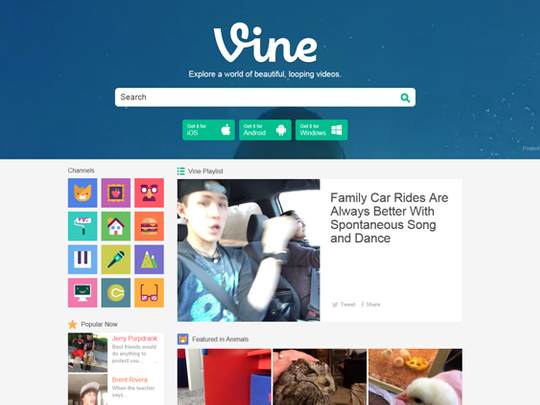
Dubai
If it’s on video, it has got to be an instant hit. Brand principals and advertising agencies in the region have never been lax in trying to use the seductive charms of a moving visual to tell a story, with the 30-second TV commercial being the favourite.
But with social media targeting advertising revenues overtly, they are now actually spoilt for choice. The Google-owned YouTube has been on a roll for some time now in the Gulf, and particularly in Saudi Arabia and the UAE.
“The consumption of video on digital platforms is a phenomenon that is growing at an ever-increasing rate in the region as well as across the globe,” said Alistair Burton, digital media director at Initiative UAE. “This is something that can be attributed to the engaging nature of the video content, which has given the platforms hosting these videos a fantastic opportunity to sell advertising to a known audience before, during or after the video content.
“Advertising can be integrated into the programme itself to target specific users — YouTube is by far the biggest such platform, although many global channels, such as Facebook and Twitter, and regional digital media channels, such as MBC and DMI, also offer their own video advertising opportunities. The phenomenal growth in watching videos online has resulted in all of these platforms growing, with advertisers taking advantage to communicate to their audiences.”
Handled well, it can do just a bit more than what a standard TV commercial can conjure up. “The most successful digital video advertising goes beyond the traditional format of a TV commercial — it uses engaging stories, celebrity endorsement and interactive aspects to make the experience a bespoke and absorbing one for the individual user,” said Burton. “In terms of the success of media platforms, the ones who will reap the most benefits and will have the most success with their video advertising will be those who best adapt to users’ desires and meet their demand for future content channels.”
As visuals go beyond just being static on digital platforms, ‘display ads’ as a category are starting to show their age. So much so, future growth possibilities could be limited.
“In fact, I believe we will start to see fewer display adverts that cause annoyance to the user, such as overlays, which appear as semi-transparent banners typically across the bottom of the screen during the course of a video broadcast,” said Burton. “Digital platforms need to prioritise the user’s experience, not their short-term advertising revenue.
“If they don’t react to demand in this respect, they will face a shrinking and less engaged audience. Traditional display advertising won’t necessarily suffer, as this format will always have a place in the market for general awareness to a relevant audience.”
What is likely to see further strong growth is ‘real-time bidding’; a big advantage is that it allows the advertiser to buy display advertising targeting a specific audience at a percentage of what traditional display advertising would cost. The best part, as Avishesha Bhojani, CEO of BPG | Group, says it is: “The region is a long way away from the global averages in social media advertising penetration.” Though a latecomer, there is nothing stopping the region from fast-tracking adoption rates and creating the kind of campaigns or narratives that stick in consumer minds.











